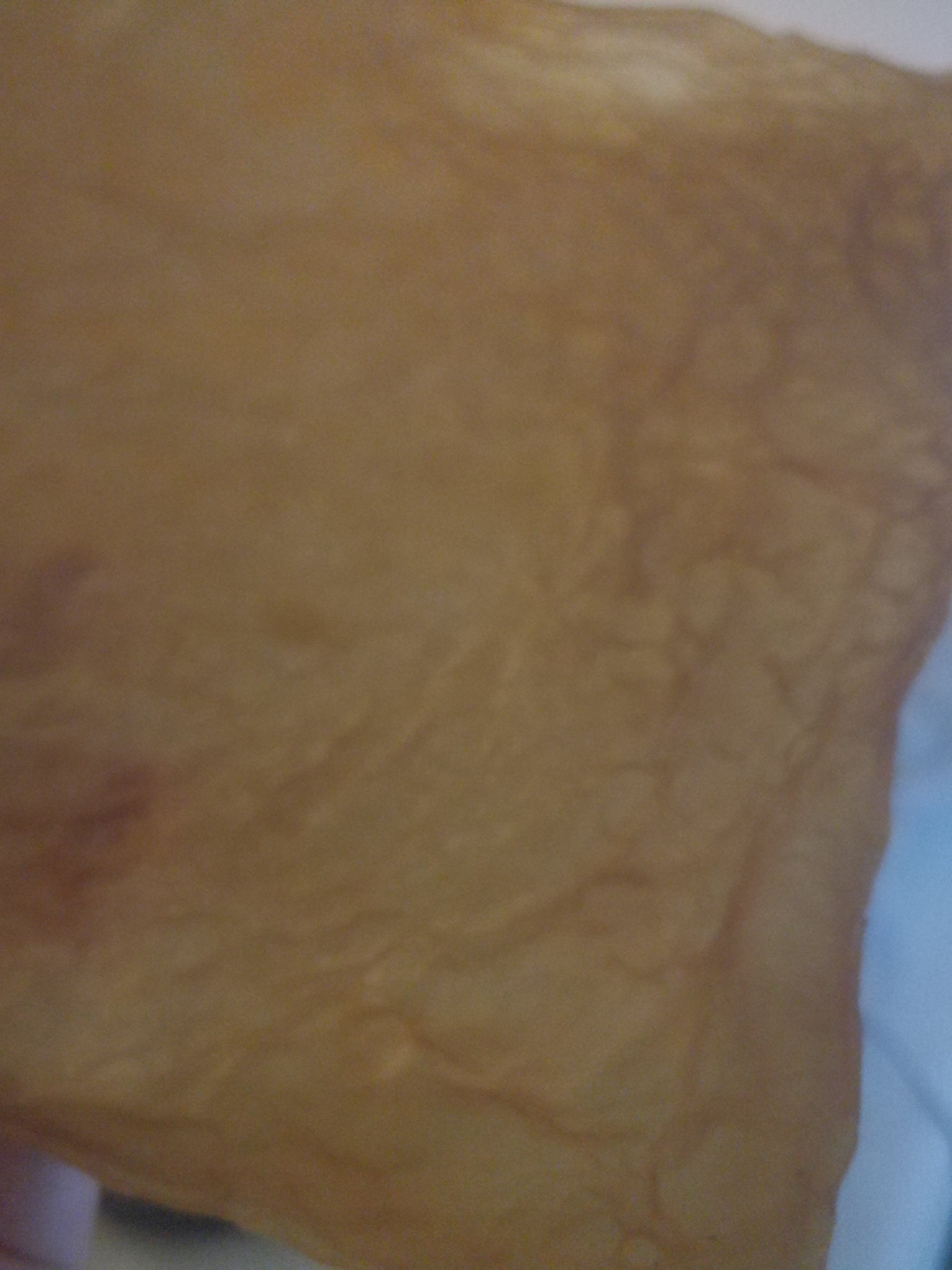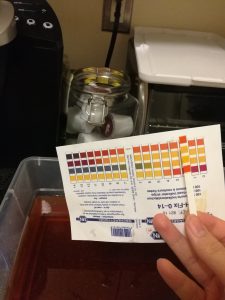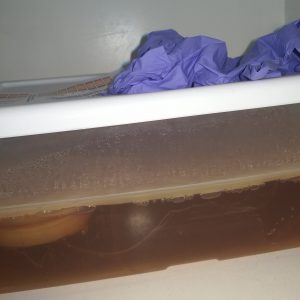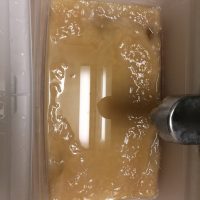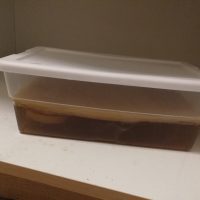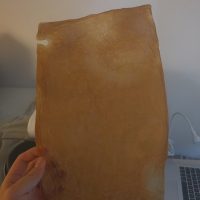I started making Kombucha at March 10th. I made tea with 5 bags of tea and the entire bag of sugar provided in the kit. And when the solution is cooled to around the room temperature, I added the apple cidar vinegar to increase the acidity, which as shown in the graph, pH = 2, which means very acidic. The solution was orange gold and clear. I was anticipating the SCOBY to shrink by a little since all these bacterias are floating atop the water in order to breath, so they wouldn’t stick to the compressed culture of a SCOBY.
Then I added the Kombucha SCOBY.
Then I placed it under in the cabinet in my kitchen, where it’s dark and warm. I only checked once during the Spring break on March 17th. The solution was still clear, but it was already clear that a layer of leather is formed and there were tissue-like things connecting the leather and the SCOBY.
The last time I checked and took it out on April 6th. It was already thick. I took it out, lightly cleaned its surface, and placed it onto a cardboard of twice the size of the leather. After I put it in my room for half an hour, I returned them back into the cabinet because of my roommates’ protest of the smell. The leather is composed of several layers when I took it out, the top layer, as shown in image “Kombucha_Apr.6_out”, is not as even and smooth as the bottom layer which has been socked in the solution.
- Kombucha_Apr.6_out
- Kombucha_Apr.6
It was totally dried on April 12th. I could peel it easily from the cardboard.
- #1
- #2
Maybe because I dried it on cardboard, mine doesn’t have the acidic smell as strong as my classmates’, it became too dry to be foldable, but can still be bent and rolled.
I think it’s a really interesting experience growing a piece of “leather” under the cabinet of my kitchen, knowing how these organisms has secretly built a culture that could be reused by human without my notice. It just broaden my mind about how much we can do, and that there may be more other option we could do to be environmental friendly. Maybe everything has a substitute, maybe one day we’ll be able to find some material to replace plastic or fertiliser.
